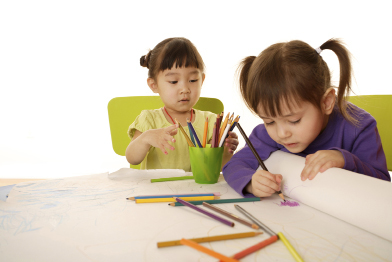Inquiry 2
| Site: | MoodleHUB.ca 🍁 |
| Course: | Early Learning and Child Care 30 Modules |
| Book: | Inquiry 2 |
| Printed by: | Guest user |
| Date: | Thursday, 18 December 2025, 10:34 AM |
Description
Created by IMSreader
1. Inquiry 2
Session 3: Observing Young Children
Inquiry 2: Types of Observation Techniques and Documentation

© Christopher Bernard/iStockphoto
Important: Always make sure that you gather information in a way that ensures the information remains confidential. Never leave your notes where children or their family members could read them.
Observations can be made in a variety of ways, ranging from writing a quick note about a child’s play activities to sitting down to observe a child’s particular behaviour. Consider the following options:
- Quick Notes: A collection of “quick notes” regarding a child’s behaviour, skills, and interactions with others can help to describe the child’s development. Quick notes, often jotted down in a small labelled pad or booklet, describe the child’s likes, dislikes, favourites, difficulties, and strengths. A variety of quick notes observing a child playing with a toy or a friend, or recreating the child’s home in the housekeeping centre, can help child care providers gain an overall picture of the child.
- Detailed Notes at Specific Times: Detailed records taken about a child during a specially designated time frame can help child care providers describe a problem, discover a difficulty, or pinpoint disruptions in a room. This type of record keeps track of everything that happens to the child in the room during the specific period of time. These records are useful when child care providers are trying to accurately describe a difficulty a child is having, in part because the notes provide all the details of the child’s activities.
- Detailed Notes at Regular Intervals: When child care providers want to know how often a particular behaviour is or isn’t occurring, they can observe a child at regular intervals (e.g., every half-hour) throughout the day. During these observation times, child care providers write down how many times they do or do not see the behaviour. Over the period of a week or so, the child care provider can establish with accuracy a representative sampling of the behaviour being observed.
Sometimes children exhibit inappropriate or worrisome behaviour (e.g., biting, hitting, or withdrawing). When such behaviour occurs, the child care provider should describe the behaviour in detail and describe what started that behaviour.
Once the child care provider has gathered and documented a few observations, the provider may see a pattern that can help figure out how to prevent or deal with the behaviour. The child care provider may also share the observations with other child care providers and appropriate members of the child’s family. These observations can be documented in a descriptive report.
Important Guidelines to Keep in Mind When Making Observations
Keep the following guidelines in mind when making observations:
- Be ready. It is important to have paper or notebooks nearby or accessible at all times. Alternatives could also include posting a white board in a centrally located cupboard or taping sheets of paper on a clipboard with a cover sheet.
- Be positioned. It is important for the child care provider to be physically ready to observe a child by being at the child’s level and close to the child, without disrupting the child’s actions. It is always important to remember that child care providers must still attend to the other children in the room when writing an observation.
- Be aware. If the child care provider is facilitating an activity, the provider should let the child take the lead. If the child care provider influences the child’s behaviour, the results can change the accuracy of the observation.
The Role of the Caregiver
Observations are more than just writing down descriptions of behaviour. Caregivers have to observe specific children and situations while still interacting with other children in care. Observation skills are essential for all staff to provide information that helps caregivers plan activities for individual children and the group. Many areas of the program, such as daily activities, individual activities, schedules, selecting materials, guiding behaviour, modelling appropriate behaviour, and meeting the individual needs of the children, can all be affected by the observations caregivers make on a daily basis.
Caregivers can set up routines for observations stating that they will observe two children per day on a rotating basis so that all children are observed throughout the week.
1.1. Learning Activity 2
Session 3: Observing Young Children
Learning Activity 2: Observation of Young Children
Focus
Different types of observation techniques can help child care providers identify children’s needs and difficulties.
Directions
Step 1: Complete Learning Activity 2: Observation of Young Children.
Step 2: Review the Student Rubric for Learning Activity 2: Observation of Young Children. Assess the quality of your responses and make any necessary adjustments.
Checking In
Save your completed learning activity and your self-assessment in the appropriate sub-folder of your course folder.